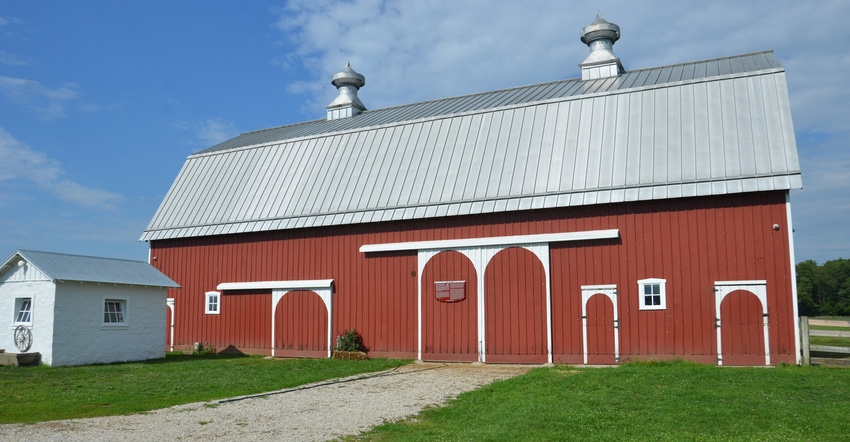October 27, 2022

If you take a drive into farm country looking for classic barns preserved from the early days of the 20th century, many barns will likely be painted red. If they aren’t red now, odds are they were in their younger days. Why?
Historians who put together displays and information at Prophetstown State Park near Battle Ground, Ind., contend the reason wasn’t just because farmers liked red. Instead, they suggest the red color was a byproduct of efforts to protect barns from the weather without spending much money.
Prophetstown State Park operates a working farm set in the 1920s. The red, gambrel roof barn located there was constructed from two barns originally located elsewhere. One was built around 1910 and the other around 1925.
Farm families were often low on cash in the 1920s. To protect barns from deterioration, they made their own concoction, often starting with linseed oil, an orange-colored oil made from flax seeds. They added milk, lime and a few special ingredients.
One special ingredient, historians claim, was plain old rust. There was plenty of ferrous oxide available. It turned the mixture red, and red barns became iconic. Today, many people restoring barns recreate that red color through paint pigments.
The reality, historians contend, is that red color was just a side effect. Farmers added rust to deter mosses and fungi. As it turned out, rust plus the other ingredients created a good sealant.
Comments? Email [email protected].
You May Also Like




